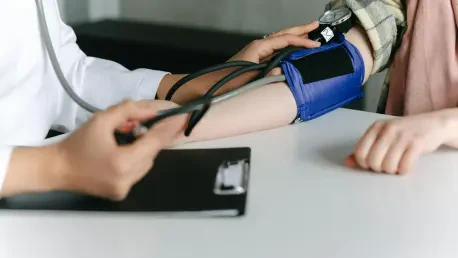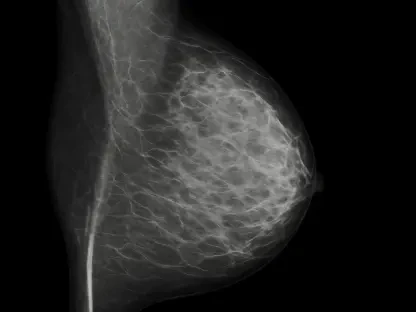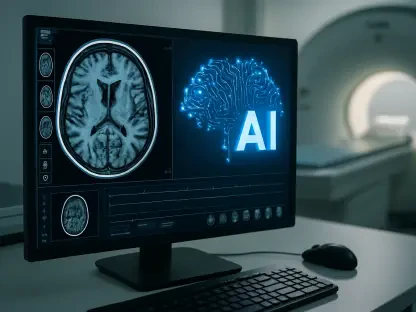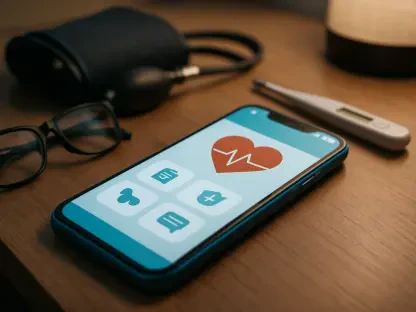In an era where healthcare systems are increasingly strained and the demand for personalized, preventive solutions continues to grow, a remarkable innovation from the University of Waterloo emerges as a beacon of hope for transforming health monitoring. This pioneering AI-radar system, often described as an “invisible safety net,” harnesses the power of radar technology and artificial intelligence to monitor vital signs such as heart rate, walking speed, and even glucose levels without the need for wearable devices or intrusive cameras. Designed to shift the paradigm from reactive to proactive care, this technology offers a transformative approach to health monitoring, particularly for vulnerable populations like the elderly and settings such as long-term care facilities. By detecting subtle physiological changes before they escalate into critical issues, it promises to reduce hospital visits and improve patient outcomes. The implications are profound, touching not only healthcare but also industries like automotive and smart home technology. As this system paves the way for a future where health surveillance is seamless and non-invasive, it also raises important questions about privacy, ethics, and security that must be addressed to ensure its responsible integration into daily life.
Unveiling a Non-Invasive Health Revolution
The core of this groundbreaking technology lies in its ability to monitor health metrics without physical contact, addressing a long-standing challenge in health surveillance. Utilizing low-power radio waves emitted from discreet devices—often no larger than a deck of cards—this AI-radar system creates detailed heatmaps of movement. These heatmaps are then analyzed by sophisticated AI algorithms to detect minute changes in gait, heart rate variability, and other vital signs with astonishing precision, often exceeding 90% accuracy during sleep studies. Unlike traditional wearables that require constant user interaction or camera-based systems that raise privacy concerns, this innovation operates unobtrusively, whether mounted on a wall or integrated into a vehicle. Its capacity to filter out environmental noise and monitor multiple individuals simultaneously in crowded settings further distinguishes it from past solutions. This non-invasive approach not only enhances user comfort but also opens doors to continuous health tracking in environments where traditional methods fall short, marking a significant leap forward in how health data is collected and utilized.
Beyond its technical prowess, the system’s design reflects a deep understanding of user needs and societal concerns. Privacy, often a sticking point in health monitoring technologies, is prioritized through the exclusion of identifiable visual data, ensuring that personal information remains protected even as vital signs are tracked. The hardware’s compact nature, ranging from USB-sized units for in-car use to slightly larger devices for cardiac monitoring, underscores its adaptability to various contexts. This versatility means that the technology can seamlessly integrate into everyday spaces without disrupting routines or aesthetics. Moreover, its ability to deliver results comparable to medical-grade electrocardiograms for heart assessments highlights its potential as a reliable alternative to conventional tools. As healthcare moves toward prevention over treatment, this system stands poised to redefine standards, offering a glimpse into a future where proactive care is not just an ideal but a practical reality embedded in daily life.
Transforming Sectors with Versatile Applications
The scope of this AI-radar technology extends far beyond traditional healthcare, promising to reshape safety and well-being across multiple industries. In long-term care facilities, it provides continuous gait analysis to prevent falls—a leading cause of injury among the elderly—while also tracking mobility decline to enable early interventions. For cardiac care, the system identifies risks before symptoms manifest, potentially saving lives through timely alerts. One of its most exciting prospects is non-invasive glucose monitoring, which could be miniaturized into a smartwatch, freeing millions of diabetic patients from the burden of daily finger pricks. These applications highlight the technology’s capacity to address critical health challenges with solutions that are both effective and user-friendly, paving the way for improved quality of life in diverse medical contexts.
Equally compelling is the technology’s potential in the automotive sector, where it could transform vehicles into “mobile medical hubs.” By monitoring driver and passenger health in real-time, the system might prevent accidents caused by sudden medical emergencies, enhancing road safety in unprecedented ways. Imagine a car that not only navigates traffic but also alerts emergency services if a driver’s vital signs indicate distress. Smart homes represent another frontier, with sensors embedded in furniture to track stress or fatigue without any user effort. In hospital settings, remote patient monitoring could become more efficient, allowing staff to focus on critical cases while the technology handles routine oversight. The breadth of these use cases illustrates a vision of a ubiquitous health safety net, seamlessly woven into the fabric of everyday environments, from personal vehicles to public spaces.
Broader Impacts on Society and Industry
At a societal level, the adoption of this AI-radar system could significantly alleviate the pressures on overburdened healthcare infrastructures by prioritizing early detection and intervention. By catching health issues before they require acute care, it has the potential to reduce hospital admissions, lower costs, and improve patient outcomes across demographics. For aging populations, continuous monitoring offers a layer of security, reducing the risk of accidents like falls and providing families with reassurance about their loved ones’ well-being. This shift toward a prevention-first model aligns with a growing recognition that healthcare must evolve beyond merely treating illness to actively fostering wellness, potentially redefining societal norms around health management and personal responsibility.
From an industry perspective, the technology presents a unique opportunity for early adopters to gain a competitive edge in markets ranging from automotive to health tech. Manufacturers in the vehicle sector, for instance, could differentiate their products by integrating health-aware features, turning cars into platforms for safety beyond traditional metrics. Similarly, health tech companies might find new avenues for innovation by complementing existing wearables with non-contact solutions tailored to specific niches. Insurance providers could leverage the continuous data stream to develop personalized risk models, adjusting premiums based on real-time health insights. The ripple effects of this innovation suggest a catalyst for broader market shifts, encouraging cross-sector collaboration and driving advancements that prioritize user-centric design and proactive care as core business values.
Navigating Ethical and Practical Challenges
Despite its transformative potential, the widespread implementation of this AI-radar system brings forth significant challenges that must be carefully managed. Privacy stands as a primary concern, as even non-visual data about vital signs and movements can feel intrusive when monitored continuously. The risk of inferring sensitive information from seemingly harmless metrics adds another layer of complexity to user trust. Additionally, the security of health data remains a critical issue, given its attractiveness to cybercriminals. Breaches, even in encrypted systems, could expose personal details, undermining confidence in the technology. Addressing these risks requires robust safeguards and transparent communication to ensure that individuals feel secure in adopting such pervasive monitoring solutions.
On the ethical front, questions about bias in AI algorithms and the dangers of over-reliance on automated health decisions loom large. If the system’s models inadvertently favor certain demographics or fail to account for diverse health conditions, disparities in care could emerge, exacerbating existing inequities. Furthermore, there’s a risk that healthcare providers might rely too heavily on technology, potentially missing nuanced human factors in diagnosis and treatment. Developing comprehensive regulatory frameworks will be essential to balance the benefits of this innovation with the protection of individual rights. Such guidelines should emphasize accountability, fairness, and user consent, ensuring that as the technology advances toward broader adoption, it does so with public trust and societal benefit as guiding principles.
Envisioning a Healthier Tomorrow
Reflecting on the journey of this AI-radar system, its development marked a turning point in how technology intersects with health and safety. The non-invasive, privacy-conscious design addressed critical gaps in traditional monitoring methods, setting a new benchmark for proactive care that spans healthcare facilities, vehicles, and homes alike. Its high accuracy in tracking vital signs and early detection capabilities demonstrated a profound capacity to save lives and reduce burdens on medical systems, while its adaptability across industries showcased a versatility rarely seen in emerging tech. Yet, the path forward was always understood to require vigilance around privacy and ethical deployment, ensuring that innovation does not outpace responsibility.
Looking ahead, the focus should shift to actionable steps that solidify this technology’s role in shaping a healthier society. Prioritizing clinical validation across diverse populations will be key to confirming its reliability, while partnerships with automotive and health tech leaders could accelerate commercialization. Equally important is the establishment of clear regulatory standards to govern data use and protect user rights, fostering an environment where trust underpins adoption. As advancements continue, exploring additional health metrics like blood pressure could expand its scope, further embedding this invisible safety net into daily life. This system stands as more than a technological achievement; it offers a blueprint for a future where prevention and well-being are seamlessly integrated, driven by the quiet, persistent watchfulness of artificial intelligence.









